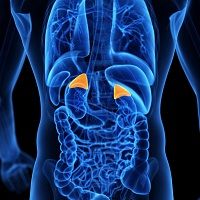Article
Cushing Syndrome in Children: Growth after Surgical Cure
Author(s):
Cushing syndrome occurs only rarely in children, but when it does, it causes weight gain and stunting. In young children, adrenal tumors are usually the cause while in adolescents, pituitary tumors are more likely.

Cushing syndrome (CS) occurs only rarely in children, but when it does, it causes weight gain and stunting. In young children, adrenal tumors are usually the cause while in adolescents, pituitary tumors are more likely. The September 2014 issue of Endocrine-Related Cancer examines growth patterns in 19 pediatric patients with ACTH-dependent CS (CD) and 18 patients with a form of ACTH-independent CS, micronodular adrenal hyperplasia (MAH). The researchers gathered data at the time of surgery and also followed up one year later.
Patients in the CD and the MAH groups had similar demographic characteristics, baseline heights and BMI scores before surgery. All patients experienced significant improvements in height and BMI after surgery. Patients with MAH, however, fared significantly better than those with CD and had better post-operative growth.
The researchers propose several reasons:
- When ACTH-secreting pituitary adenoma requires extensive surgical exploration, remaining pituitary cells often lose some of their function.
- CD patients tend to be older and have consistent and increased glucocorticoid exposure; they develop vertebral fractures more often leading to compromised skeletal and overall growth potential. MAH patients often have cyclical CS, with intermittent hypercortisolism and an overall milder CS.
- CD patients often need a longer-than-expected course of therapy with steroids after surgery, which alters metabolism and growth.
- CD patients have been shown to have advance bone age because of ACTH-induced metabolic changes.
The authors indicate that CS patients are often considered for growth hormone therapy once the underlying problem is corrected. They remind clinicians that MAH patients are less likely to need growth hormone. They recommend close monitoring for CD patients, and early intervention with growth hormone if growth does not meet expectation.




